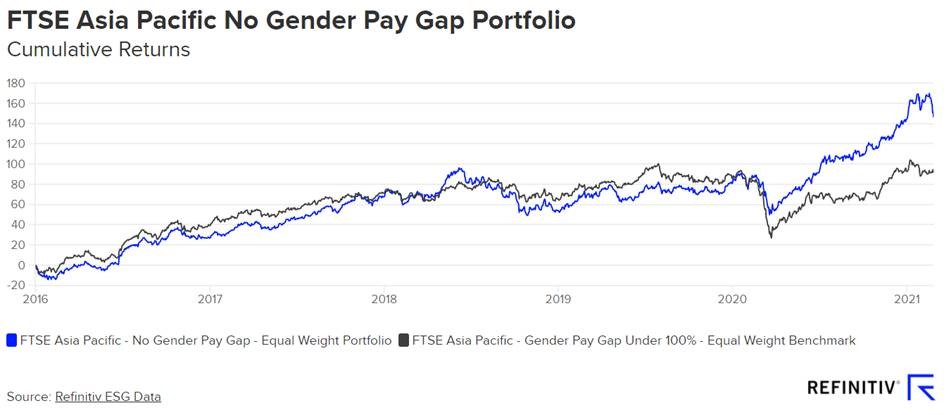
More firms in Asia are being transparent about the disparity among their ranks

Is gender equality becoming part of the business agenda in Asian firms? Companies used to neglect the gender pay gap but have recently shown some progress in terms of being transparent and accountable for the issue.
According to a recent study, over 45% more APAC-based firms or 148 companies disclosed their pay gap in 2020, which was a jump from just 102 company reports the year before.
The figures correspond with a positive global trend where companies choose to disclose their gender pay gap. Globally, it was found that 748 companies had disclosed their pay gap in 2020 – a 10% increase from the year before or 678 firms.
Read more: MOM reveals Singapore's gender pay gap
The reason for the jump? It was likely due to growing pressure from investors and customers, government regulation or efforts to improve their ESG scores, said Refinitiv.
However, there’s still much to be done in the journey towards gender equality. Vernice Moh, managing director, ASEAN, data & analytics at London Stock Exchange Group commented that while there’s been “encouraging progress” in the area, with data indicating a “marked improvement” in board diversity in Asia, the pay gap remains a tough problem to crack.
“There is still room for companies in Asia to create more diverse and inclusive workplaces,” Moh said. “The gender pay gap remains one of the most pertinent and persistent issues that needs to be addressed.”
Read more: Gender pay gap begins in college, study says

The report found data that could make a compelling case for greater commitment in diversity and inclusion. Findings revealed that companies that practised ‘equal pay policies’ outperformed those with a disparity in gender-based salaries. This was true for APAC firms as well, where companies cited cumulative returns that outperformed others by a spread of 55.10%.
“Apart from strengthening a company’s ability to attract a diverse and talented workforce, our report also shows that companies with equal pay tend to outperform those with a disparity in pay between genders,” Moh said.
“Moving forward, companies should be more transparent about disclosing their efforts to narrow the gender wage gap and establishing actionable D&I targets to advance the region’s march towards gender equality.”